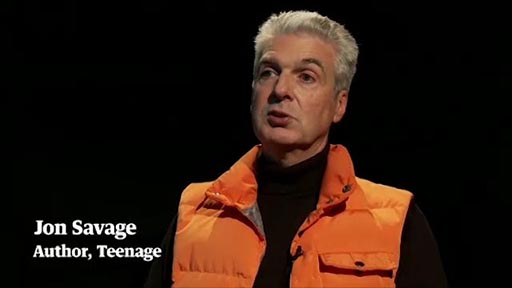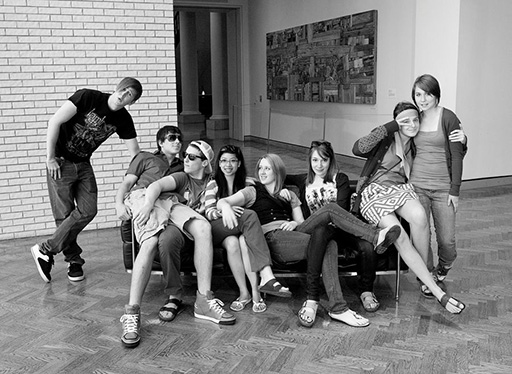4 Teenage kicks?
The image and idea of ‘being a teenager’ are part of ‘Western’ received wisdom, but it wasn’t always that way. The next activity considers how the idea of ‘the teenager’ came to be so widespread. It also considers the ways in which certain places, such as the bedroom, have become central to teenage experience and identities. Working through the activity will allow you to become more familiar with how young people come to be recognised as a distinctive collective entity. It will also introduce you to the way academic research investigates such social phenomena.
Activity 4 Teenage dreams are hard to beat
Part 1
The discovery and invention of the teenager in the mid-nineteenth century, and the way the concept took hold of the popular imagination throughout most of the twentieth century, are the subjects of Jon Savage’s book, Teenage: The creation of youth 1875–1945 (Savage, 2007).
Watch Video 2 ‘Teenage’, in which Jon Savage describes making a film for TV (Teenage, 2013) about his research for the book:

Transcript: Video 2 Teenage
[MUSIC PLAYING]
[MUSIC PLAYING]
Part 2
Now read this short article on youth movements written by Matt Wolf, another of the makers of the film Teenage (2013):
- 10 Youth Movements That Changed History [Tip: hold Ctrl and click a link to open it in a new tab. (Hide tip)] (Wolf, 2014)
Part 3
Complete the following drag and drop activity, to match the youth movements to the place they are associated with and their formation dates.
Discussion
As one of the female narrators in the video notes, ‘A lot of people try to shape the future. But it’s the young ones who live in it.’ This observation resonates strongly with events such as the UK referendum on leaving the EU. Young people tended to vote ‘remain’, or could not vote at all, but they will live in the future created by the votes of older people.
Savage’s observation on how frequently pop culture starts with ‘frenzied young women’ and the role of young women’s diaries and journals in providing a crucial record of the experience is a reminder about how history is constructed. As someone who frequently writes from ‘queer’ perspectives, Savage is sensitive to the way women play prominent roles in history but are frequently written out of it.
The images we have of youth depend on this history and what is selected, what is left out and whose stories are told. As the film suggests, youth is a social construction that inevitably involves ideas about gender, race and power. This is self-evident in an organisation such as the Hitler Youth that became notorious for its explicit alignment with the development of fascist political power in Germany. The complicity of the Boy Scouts in British colonial projects may be less explicit and less notorious, but it was no accident of history.
Studies of other less formal youth groupings, such as Hippies, Punks, Dreads, Goths or Riot Grrrls can also be fruitful and are the subject of distinctive academic disciplines, such as sub-cultural studies (see, for example, the Interdisciplinary Network for the Study of Subcultures, Popular Music and Social Change (University of Reading, n.d.).

